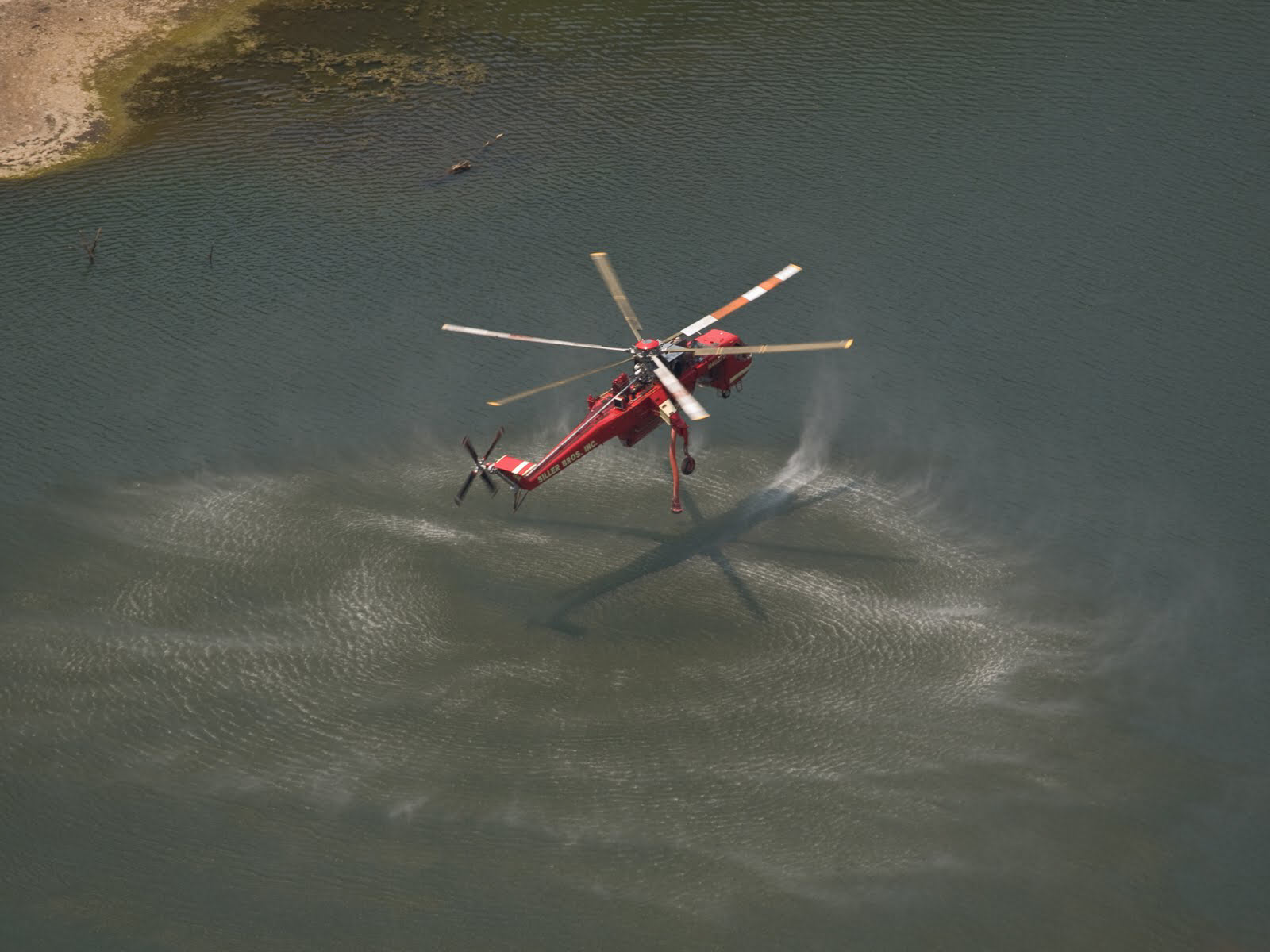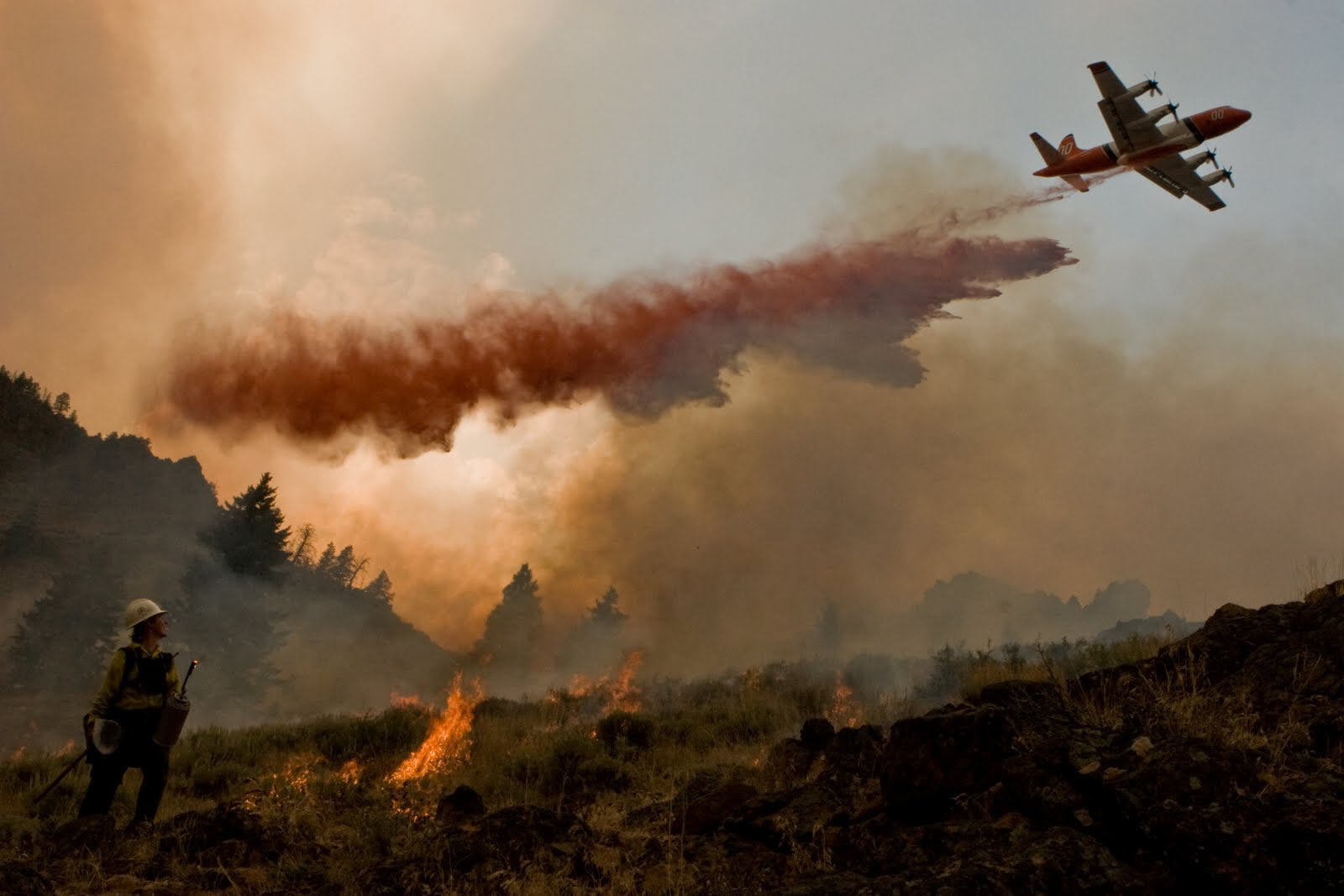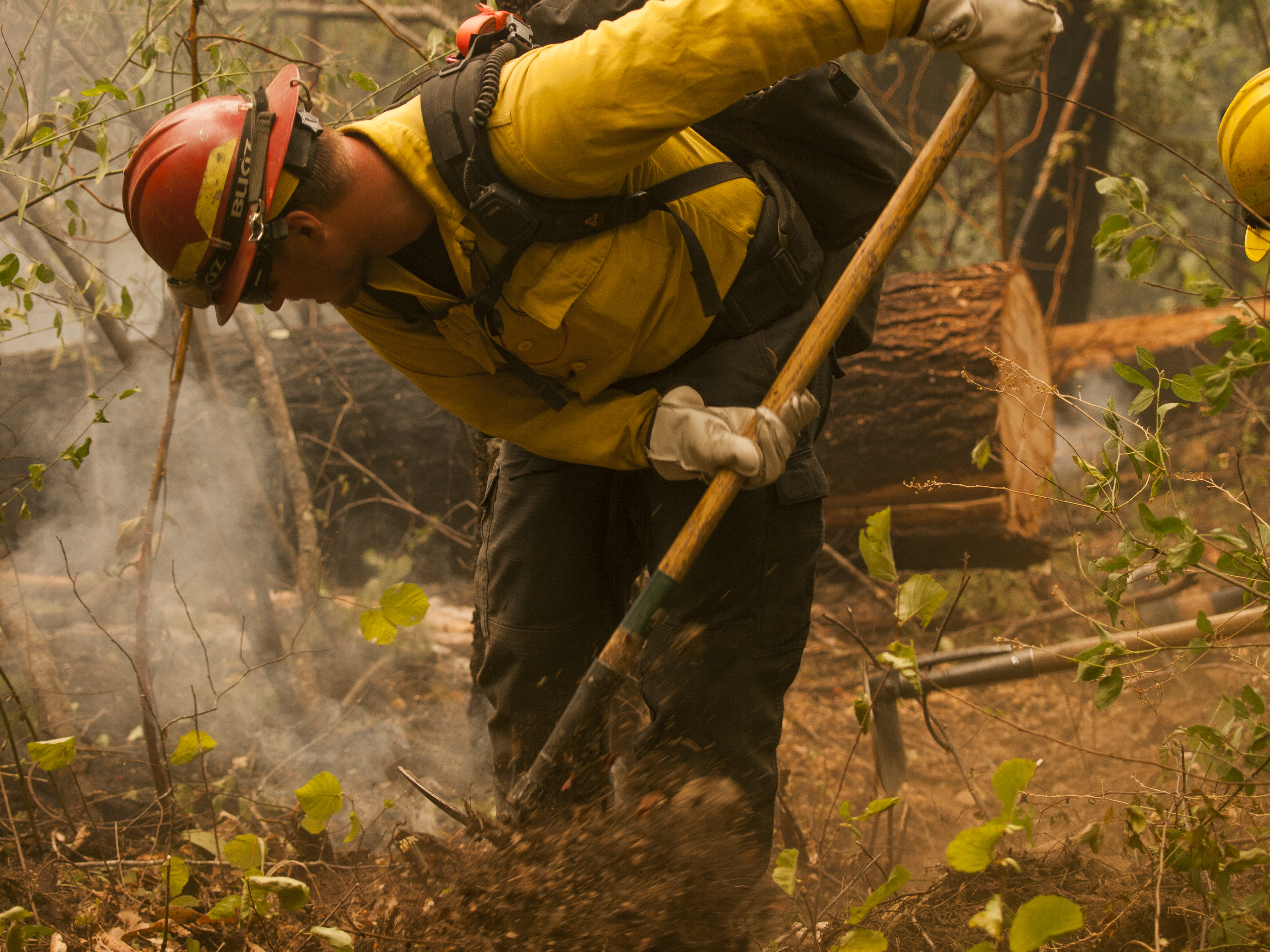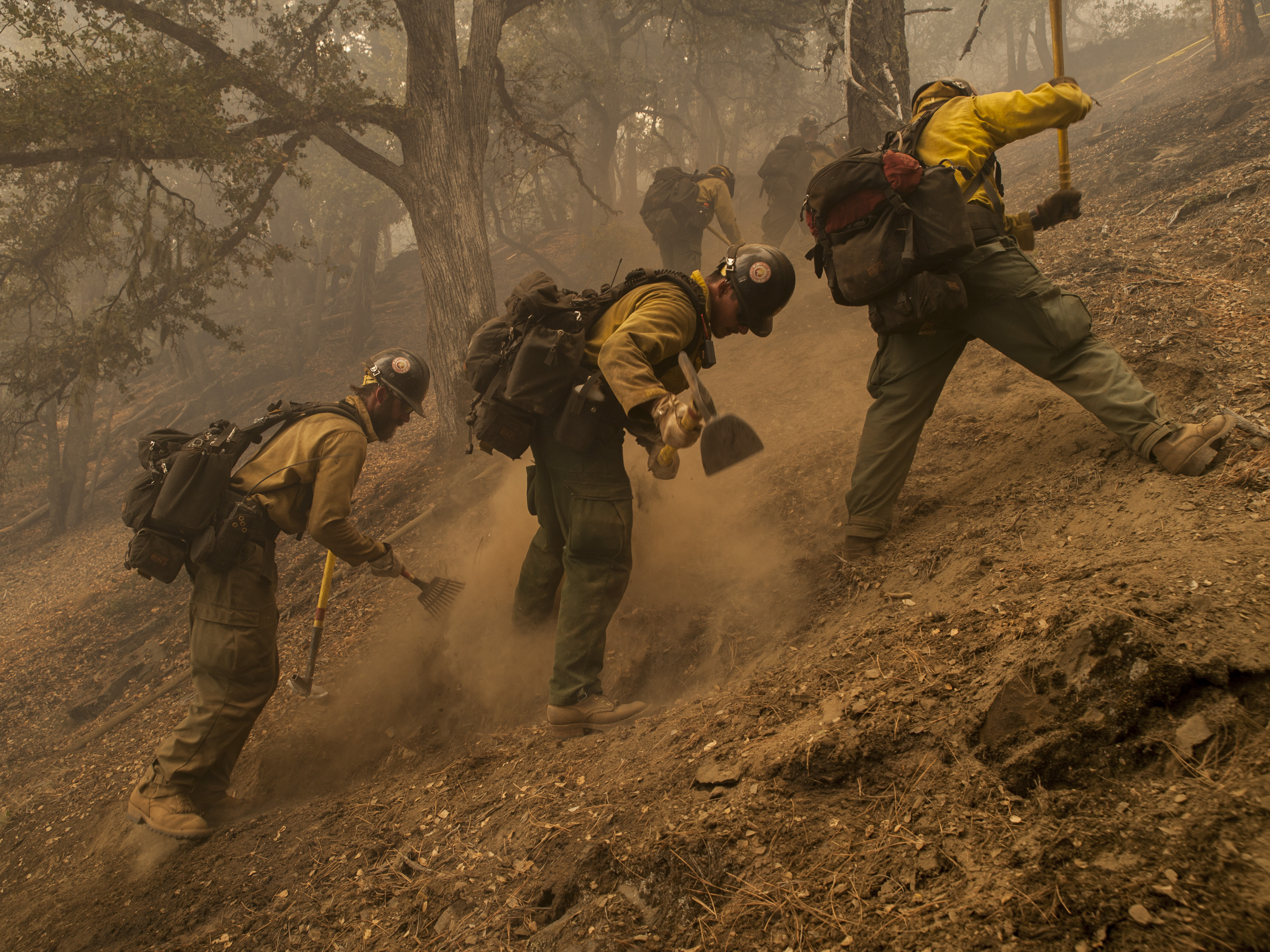Equipment and Tools

The Forest Service and other federal, tribal, state, and local government agencies work together to respond to tens of thousands of wildfires annually. Each year, an average of more than 73,000 wildfires burn about 7 million acres of federal, tribal, state, and private land and more than 2,600 structures.
Firefighters must be properly trained and equipped to respond to wildfires safely and effectively. The U.S. Forest Service is continuously conducting research on, and implementing, new technologies to enhance wildland firefighting. These efforts range from modernizing the large airtanker fleet to testing new materials for fire shelters to transitioning to a different type of parachute for smokejumpers.
Much of the work to develop and implement new technologies is done by the U.S. Forest Service National Technology and Development Program.
Aircraft & Engines

Helicopters rapidly transport fire crews, equipment, water, and fire retardant to wildfires, especially in remote locations.
Airplanes transport crews, including smokejumpers to fire locations, sometimes cross country. Airplanes can also be used to gather infrared imagers and drop fire retardant.
Modular Airborne Fire Fighting Systems (MAFFS) provide surge capability when more large airtankers are needed.
The U.S. Forest Service believes there is potential to use Unmanned Aircraft Systems (UAS) to support wildfires and other natural resource management activities.
Wildland fire engines of various types are used depending on the terrain and type of fire.
The Role Retardant Plays in Fire Suppression

Fire retardant is used to reduce the intensity and rate of spread of wildfires and enable firefighters on the ground to access the area and construct containment lines more safely near the fire.
Long term retardants, mixed for delivery to wildfires, contain about 85% water, 10% fertilizer, and 5% minor ingredients (colorant, corrosion inhibitors, thickener, stabilizers, bactericides, and flow conditioners).
The fertilizer in fire retardant alters the way wildfires burn, decreasing fire intensity and slowing the advance of the fire, even after the water in the fire retardant has evaporated. The amount of time that long-term retardants are effective in reducing fire intensity and spread after the water they contain has evaporated varies from several days to up to one week or more depending on vegetation type, coverage levels, precipitation, and other factors.
A detailed explanation and demonstration video of how fire retardant works is available here.
All of the fire retardant that the U.S. Forest Service uses has been extensively tested and falls into the Environmental Protection Agency’s (EPA) “practically non-toxic” category for wild mammals, including humans, as well as aquatic species. However, studies show that a single retardant drop directly into a stream may cause a sufficient ammonia concentration in the water to be lethal to fish and other aquatic organisms. Consequently, the U.S. Forest Service has stringent guidelines in place to prevent fire retardant from being dropped into all waterways and into mapped “avoidance areas” that provide habitat for certain species of plants and wildlife.
Wildland Firefighter's Personal Protective Equipment

Firefighters must be prepared with proper equipment, training, and protective wear to work on wildfires.
Personal Protective Equipment includes fire resistant pants and shirts, a helmet, eye protection, gloves, leather boots, and fire shelter.
Firefighters carry personal gear bags that contain water, rations, sleeping bag, and hand tools such as a Pulaski, shovel, or McLeod.
A Pulaski combines an ax and an adze in one head and can be used to dig up soil and chop wood, making it a very versatile tool.
A McLeod has a tooth-like blade on one side for raking firelines and a large hoe-like blade on the other for cutting branches and sod.

